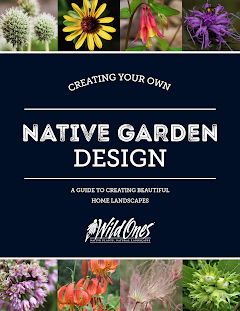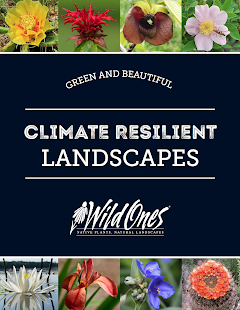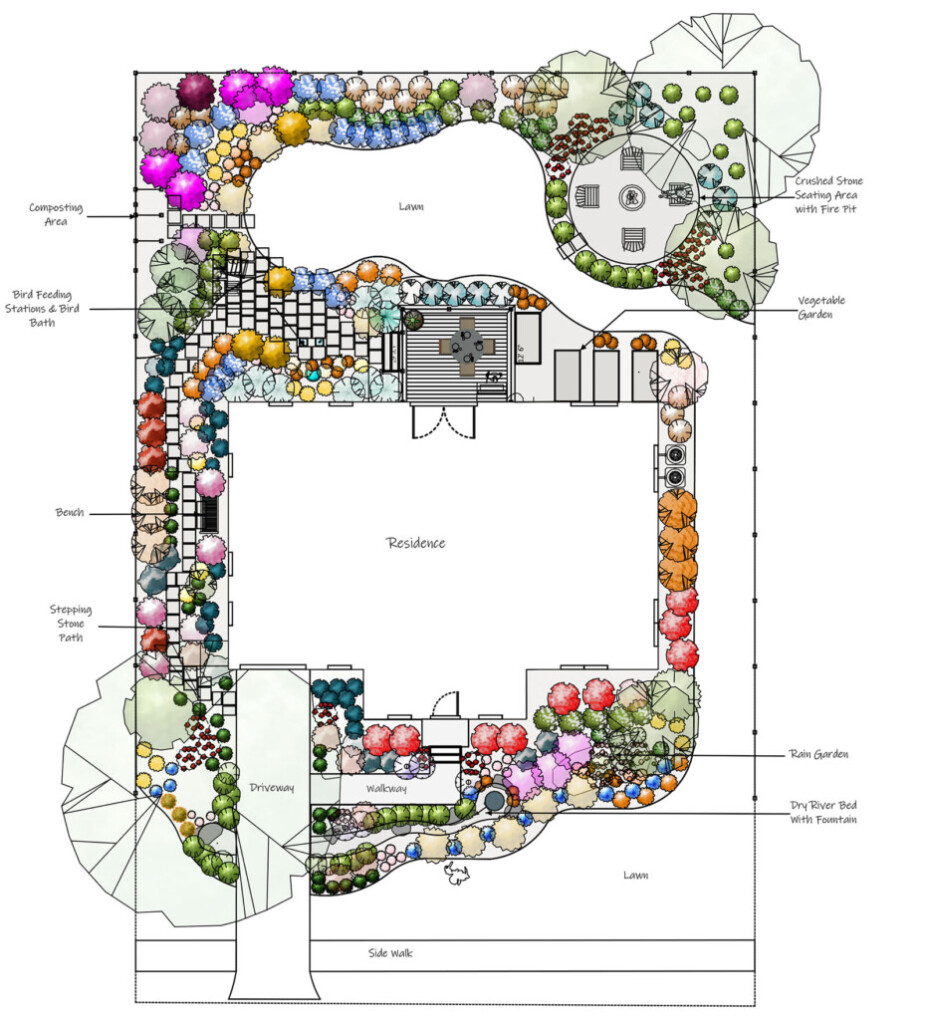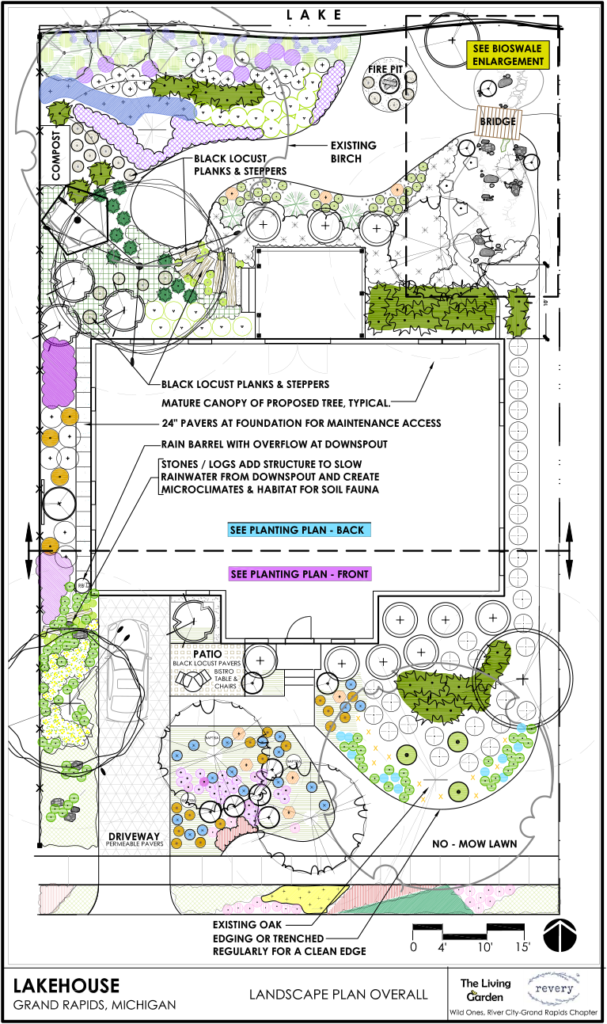GETTING STARTED GUIDES
Native plants can be used in your yard, no matter how big or small, and no matter your style, whether you like the “kept” look, or the wild look.
- WILD ONES NATIVE GARDEN DESIGNS a step-by-step online guide to getting started and planning a native garden
- Climate Resilient Landscapes how to create a landscape that slows climate change, increase climate resilience, and stems biodiversity losses
-
- Top plants to use in Michigan: NOWO Powerhouse Plant List
FREE NATIVE GARDEN DESIGNS
Wild Ones offers 20 free, beautiful, and professionally designed, native garden plans for a number of ecoregions in the U.S. which can be downloaded here and watch a video presentation by the designers: http://nativegardendesigns.wildones.org/
Additional Online Guides from other organizations
- Rochester Pollinators Garden Plant for small areas
- Michigan-Native-Garden-Design-for-the-Birds.pdf (michiganaudubon.org)
- Getting Started – Native Plants and Ecosystem Services (msu.edu) website for all things Michigan gardens (not exclusively native)
- Plants to attract and support beneficial insects (msu.edu) brochure with native plants indicating bloom times
- Small native garden ideas from Lehigh Gap Nature Center- printable pdf booklet)
Check out some of our members’ gardens here for ideas!
Websites About Native Plants & Habitat
- Homegrown National Park – Tallamy’s Hub • homegrownnationalpark.org
- Michigan Bees and their plant needs • Michigan Bees MSU.edu
- Michigan Butterflies and their host plants • NativePlant.com Butterfly Larval Host Plant list
- Michigan Flora • Browse – Michigan Flora (select by Genus to find a plant or use the search tab)
- Michigan’s Natural Communities • Michigan Natural Features Inventory (msu.edu)
- Michigan Vegetation circa 1800 Maps • – Michigan Natural Features Inventory (msu.edu)
- National Wildlife Federation – Garden For Wildlife • nwf.org/garden-for-wildlife
- US Forest Service Celebrating Wildflowers • fs.fed.us/wildflowers
Learn more about species and garden topics:
- Get Sedgy! Adaptable Native Sedge Species to Replace Wood Mulch – YouTube
- 10 Garden Ideas to Steal from Superstar Dutch Designer Piet Oudolf – Gardenista
- Deer-resistant plants – habitatmatters.org
- Salt-Tolerant Native Plants – Grow Native!
- Enhancing beneficial insects with native plants – MSU Extension summary of study with links to detailed info including bloom times
- Rain Gardens: A Tool for Ecological Restoration and Improved Water Quality, by Peggy Malnati
- Practical Phragmites Control by Bob Williams
- Botany Primer by Natures Notebook – Learn botany terms and details
Butterfly Gardening
- Components of a Butterfly Garden – Handout by Brenda Dziedzic
- Michigan Butterflies and their host plants • NativePlant.com Butterfly Larval Host Plant list
- Butterfly Gardening Information
- Nature in the Hills – Brenda’s Butterfly Habitat – YouTube
Honeybees vs Native Bees
- Help the native bees
- Bee_Basics_North_American_Bee_ID.pdf (usda.gov) Comprehensive guide to bees – Good introduction
- Common Bees of Michigan Pictorial Handout(msu.edu) 2 Page pictorial of the Common Bees of Michigan
- Michigan Bumble Bees – Michigan Natural Features Inventory (msu.edu) See the historic and current ranges of Michigan Bumblebees
- XercesSoc_Wild-Pollinators.pdf Guide to Eastern NA Bees, Blooms that support them, Habitat and Pesticide considerations
- Guide to Minnesota Bumblebees Resource for Visual Identification of Bumble bees
- Attracting Beneficial Insects with Native Flowering Plants (msu.edu) Chart of native plants, when they bloom and benefits
- Bee and Pollinator Books by Heather Holm – Attract, Observe and Identify Pollinators and Beneficial Insects with Native Plants (pollinatorsnativeplants.com)
Native Plants Tolerant of Juglone (Black Walnut, etc.)
-
- Prairie Moon Nursery Black Walnut Tolerance List All natives, although some may not be native to Michigan. This list is from Minnesota.
- Juglone Resistant Plant List
- Black Walnut Toxicity MSU Please note that this list requires careful research, as many of the plants here are NOT natives. Use with caution.
- Walnut Tolerant Native Plants | In Our Nature — In Our Nature
Replacing Common Invasive Ornamentals with Similar Natives
| Nursery Sold Invasive | Native Alternative(s) | Feature |
| Bradford Pear | Redbud, Native Dogwoods, Shadbush/Amelanchier | Small trees with spring bloom |
| Bamboo | Eastern red-cedar | Dense, evergreen foliage for privacy |
| Japanese or Chinese Wisteria | American Wisteria | Similar to nonnative, but not invasive |
| Burning Bush | Highbush blueberry or Winterberry | Brilliant fall color; edible fruit, Bright-red berries in winter |
| Butterfly Bush | New Jersey Tea, Button bush | Attract butterflies with flowers |
| Japanese Barberry | Ninebark, Aromatic Sumac | purple leaf color varieties, nice fall color |
| Privet | Bayberry | Glossy foliage can be pruned to hedge |
| Purple Loosestrife | Blazing-star, Joe-pye weed | Spikes of purple flowers in summer Purple flowers attract butterflies |
| Periwinkle, English Ivy, Pachysandra | Wild Strawberry, Canadian Bunchberry, Canadian Anemone, Wild Ginger Creeping phlox | Attracts pollinators, Attractive groundcover |




